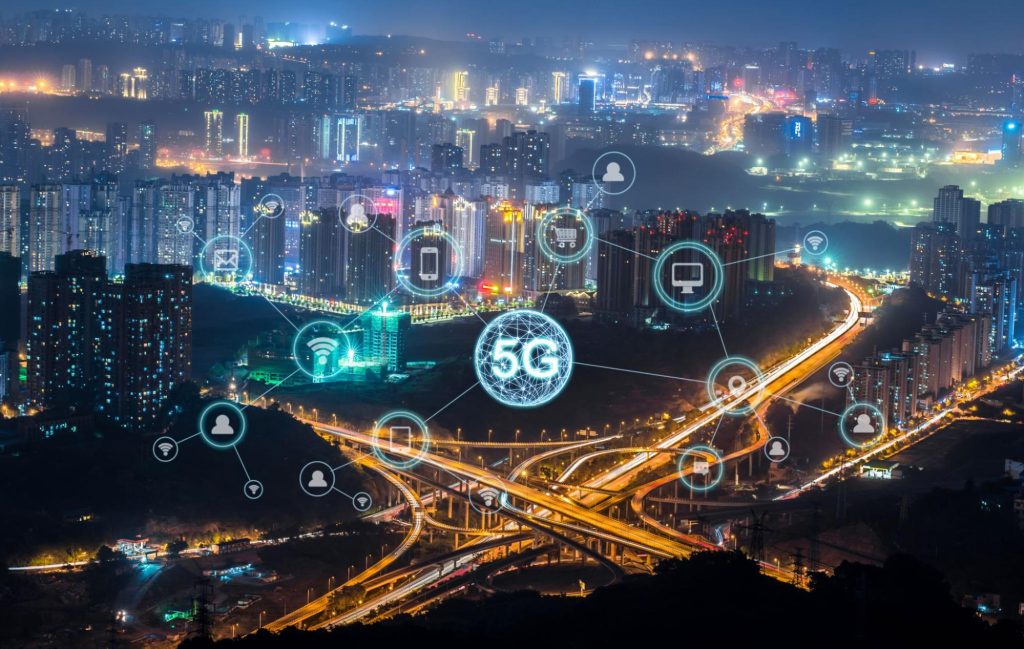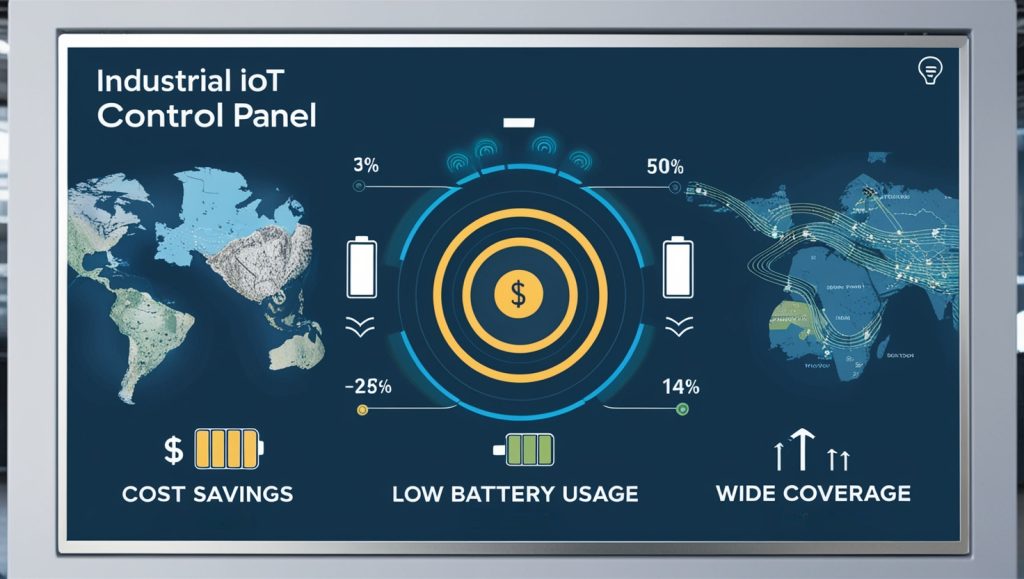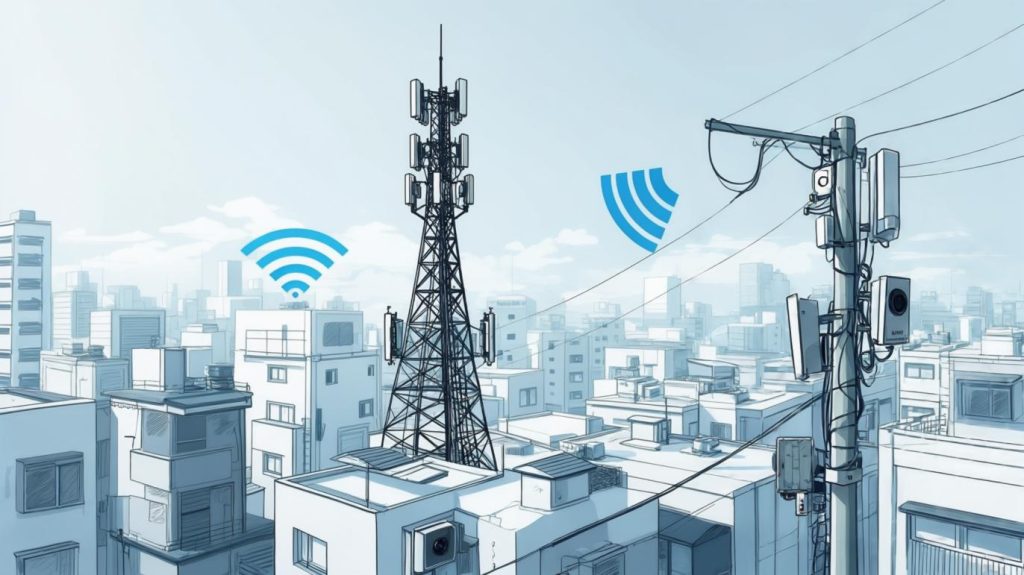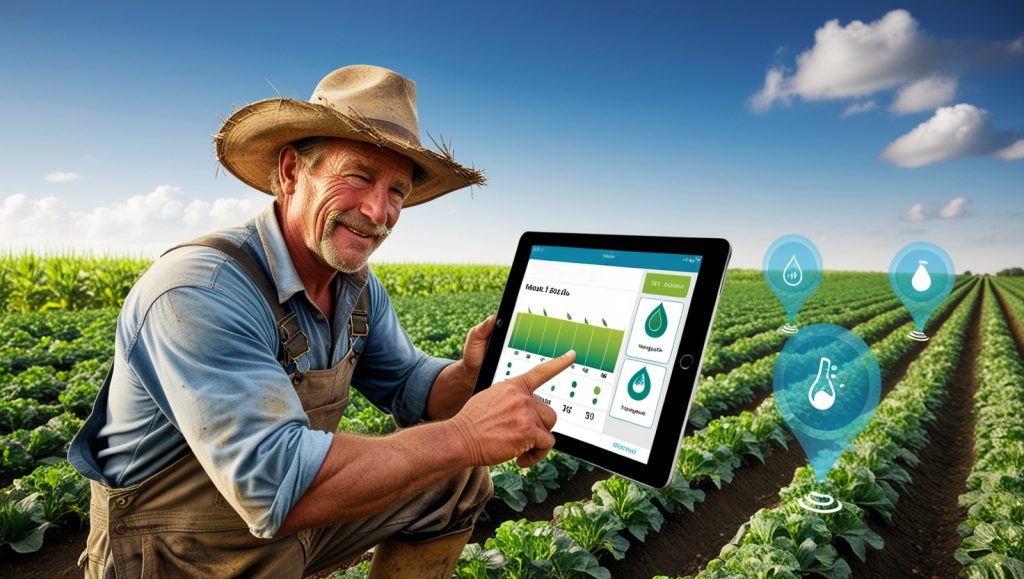NB-IoT: Powering the Future of Low Power Wireless Networks and IoT Connectivity
Table of Contents
1. The Growing Need for Efficient IoT Connectivity
2. What is NB-IoT and Why It Matters
3. Why NB-IoT is Gaining Momentum in the IoT Ecosystem
4. Key Advantages of NB-IoT for Industries and Cities
5. Real-World Applications of NB-IoT
6. NB-IoT vs Other Low-Power Wireless Technologies
7. NB-IoT in the 5G Era
8. Key Takeaways
9. Final Thoughts: The Quiet Revolution of NB-IoT
The Growing Need for Efficient IoT Connectivity

As the Internet of Things (IoT) continues to expand, the demand for reliable, cost-efficient, and energy-saving communication technologies has never been greater. Among various solutions, Narrowband IoT (NB-IoT) stands out as a transformative technology tailored for connecting devices in low-bandwidth, low-power scenarios. This blog explores how NB-IoT is reshaping industries, enabling smarter infrastructure, and positioning itself as a foundational layer for the future of low-power wireless networks.
What Exactly Is NB-IoT, and Why Is It a Breakthrough?
NB-IoT, short for Narrowband Internet of Things, is a cellular-based radio technology that falls under the LPWAN (Low Power Wide Area Network) category. Designed specifically for applications that require infrequent, small data transmissions, it operates in licensed spectrum and leverages existing LTE cellular infrastructure. Its narrow bandwidth, deep penetration capabilities, and long-range performance make it ideal for scenarios where traditional networks are either too expensive or inadequate.
This technology enables devices such as environmental sensors, smart meters, and asset trackers to operate for extended periods, often years, on a single battery.
Why NB-IoT is Gaining Momentum in the IoT Connectivity Ecosystem

NB-IoT addresses a unique set of challenges in IoT deployments, offering capabilities that balance reach, power efficiency, and affordability. It is especially useful where consistent data transmission is needed, but without the high energy or bandwidth demands of more advanced networks like 4G or 5G.
Let’s explore the core NB-IoT advantages that are fuelling its global adoption.
Key Advantages of NB-IoT for Industries and Cities
1. Long Battery Life for Remote Deployments
NB-IoT devices are engineered for low energy consumption. They can remain in sleep mode for extended durations and transmit small data packets only when needed. This efficiency translates into battery lives of 5 to 10 years in many use cases.
Example: In the city of Vienna, Austria, NB-IoT is used in underground water meters that transmit usage data once a day. These meters are located in hard-to-reach areas and would be expensive to maintain if frequent battery replacement were required.
2. Deep Indoor and Rural Coverage
One of the defining features of NB-IoT is its ability to offer reliable connectivity in environments where traditional cellular signals fail, such as underground locations, dense urban infrastructure, and rural landscapes.
Example: Deutsche Telekom has implemented NB-IoT solutions in German vineyards to monitor soil moisture and weather conditions, enabling data collection even in remote fields where regular LTE connectivity is poor or unavailable.
3. Cost-Effective Network Deployment and Scalability

NB-IoT can be deployed on existing LTE bands, which means operators don’t need to invest in entirely new infrastructure. This reuse of spectrum and hardware keeps capital expenditure low while allowing rapid scale.
Example: China Mobile has deployed NB-IoT nationwide to support over 100 million connected water meters, significantly reducing both infrastructure costs and manual labour associated with meter readings.
4. Support for Massive Device Density
A single NB-IoT cell can support more than 50,000 devices, making it well-suited for dense device environments like smart buildings, industrial parks, and cities.
Example: In Barcelona, NB-IoT is used to monitor waste bins across the city. Each sensor-equipped bin notifies the sanitation department when it is nearly full, streamlining collection schedules and reducing operational costs.
Real-World Applications of NB-IoT
Smart Agriculture

Precision agriculture relies on sensor data to optimise irrigation, monitor livestock, and control pests. NB-IoT enables this with long-range, battery-efficient devices.
Example: In India’s Maharashtra region, farmers use NB-IoT-enabled sensors to monitor crop moisture levels. These systems help improve water use efficiency and increase yields with less manual intervention.
Utility Metering
Utility companies benefit from NB-IoT through automated metering and leak detection, leading to accurate billing and faster issue resolution.
Example: British Gas uses NB-IoT smart meters that send hourly gas consumption data, allowing customers to track usage in near real-time via mobile apps, while also enabling predictive maintenance by the utility provider.
Logistics and Supply Chain Tracking

NB-IoT enables constant monitoring of shipments, warehouse inventory, and moving vehicles.
Example: DHL has experimented with NB-IoT to track temperature-sensitive pharmaceutical shipments across Europe. The sensors provide data on location, temperature, and handling, helping ensure regulatory compliance and product safety.
Smart Cities
NB-IoT plays a pivotal role in smart infrastructure, from managing energy consumption to monitoring environmental conditions.
Example: In South Korea’s Busan Smart City Project, NB-IoT sensors monitor air quality, noise levels, and water usage in real-time, feeding data to a central dashboard that informs municipal services and residents alike.
Comparing NB-IoT with Other Low-Power Wireless Networks
Understanding how NB-IoT stacks up against alternatives helps stakeholders make informed decisions:
| Technology | Coverage Range | Data Speed | Typical Use Cases | Technology |
| NB-IoT | Excellent (deep indoor, wide area) | Low | Smart meters, parking sensors, and agriculture | NB-IoT |
| LTE-M | Good | Moderate | Wearables, mobile healthcare, mobile assets | LTE-M |
| LoRaWAN | Very High | Low | Remote area monitoring, rural applications | LoRaWAN |
| BLE/Wi-Fi | Low | High | Smart homes, consumer electronics | BLE/Wi-Fi |
NB-IoT’s Place in the 5G Future
NB-IoT is not just a transitional technology; it’s embedded in the 5G ecosystem under the massive Machine-Type Communication (mMTC) umbrella. It’s geared toward enabling a future where billions of low-power devices work in harmony, whether in factories, cities, or farms.
As 5G infrastructure becomes more widespread, NB-IoT will benefit from improved latency, integration with edge computing, and seamless connectivity with other wireless technologies.
Key Takeaways
- Purpose-Built for Low Power, Low Bandwidth Use: NB-IoT is ideal for applications where small, infrequent data transmissions are needed, often over long periods on a single battery.
- Superior Coverage: With excellent deep indoor and rural penetration, NB-IoT ensures consistent connectivity in places traditional networks struggle.
- Cost and Energy Efficiency: By leveraging existing LTE infrastructure, NB-IoT offers a cost-effective way to deploy scalable IoT solutions while keeping power consumption minimal.
- Massive Device Support: A single NB-IoT cell can support tens of thousands of devices, making it perfect for smart cities and industrial applications.
- Real-World Proven: From agriculture in India to smart meters in the UK and smart bins in Spain, NB-IoT is already driving impact globally.
- 5G-Ready: As part of the 5G mMTC framework, NB-IoT is positioned to scale with the growing IoT universe and integrate with emerging edge computing and network advancements.
Final Thoughts: Why NB-IoT is Quietly Revolutionising IoT
NB-IoT may not make headlines like autonomous vehicles or generative AI, but its role in enabling scalable, low-power wireless networks is indispensable. From ensuring smart water meters operate efficiently in small towns to helping farmers monitor crops more effectively, NB-IoT provides the practical, cost-effective backbone many smart systems rely on.
As more industries and municipalities look for IoT connectivity solutions that are affordable, long-lasting, and robust in difficult environments, NB-IoT is set to become an even more central part of the connected world.
Sources:
https://www.mdpi.com/1424-8220/19/11/2613
https://www.a1.digital/knowledge-hub/what-is-narrowband-iot-a-comprehensive-guide/
https://pmc.ncbi.nlm.nih.gov/articles/PMC9783927/
https://www.rcrwireless.com/20200705/5g/china-mobile-deploy-118000-nb-iot-base-stations-2020-report
https://www.ctamericas.com/blog/china-telecom-delivers-first-commercial-nb-iot-based-water-management-platform/
https://carrier.huawei.com/en/success-stories/iot/nb-iot-yingtang
https://pmarketresearch.com/it/lte-iot-market/
https://pmc.ncbi.nlm.nih.gov/articles/PMC8271664/
https://onomondo.com/blog/nb-iot-vs-lte-m-a-comparison-of-the-two-iot-technology-standards/
https://www.mokosmart.com/lorawan-vs-nb-iot-how-do-they-compare-and-differ/
https://en.wikipedia.org/wiki/Narrowband_IoT

